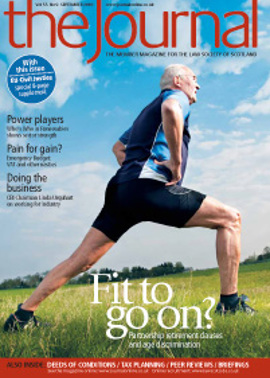Surprise results?

As readers will be aware, changes in recent Budgets, both those which were anticipated and those which were not, leave practitioners having to become considerably more creative in maximising tax efficiency for clients.
For higher earners, as previously announced, from 6 April 2010, the gradual reduction in the basic personal allowance results in an effective income tax rate of 60% on the first £12,950 of taxable income over £100,000. This, in conjunction with the introduction of the new rates of 50% for taxable income over £150,000 and 42.5% for dividends above the £150,000 threshold is incentive enough to look elsewhere for tax planning ideas.
In contrast, following the emergency Budget on 22 June, from 1 April 2011 the small profits rate of corporation tax is to reduce from the current rate of 21% to 20%, and the main rate will come down from 28% to 27%. There will be further graduated reductions so that the main rate will be 24% by 1 April 2014.
One effect of the contrast in tax rates is that it creates an incentive to introduce corporate entities for individual tax planning, a point to which we return later.
A new rate of capital gains tax (CGT) has also been introduced, this time with effect from 23 June 2010, although the widely expected alignment of CGT and income tax rates did not fully materialise. With a new maximum rate of 28%, clients may still be willing to consider triggering gains at that level in order to restructure their affairs to secure capital growth rather than income. Further, those contemplating disposals of entrepreneurial businesses (subject to satisfying certain conditions) will benefit from an increase in the lifetime limit for entrepreneurs’ relief, securing a 10% rate on the first £5,000,000 of gains.
The acquisition factor
The unintended consequence to which the heading to this article refers, relates to the matrimonial implications of any schemes designed to take advantage of these tax planning opportunities.
Many readers will be aware that assets owned prior to a marriage or civil partnership (“marriage”) are not matrimonial property under Scots law. Assets acquired during the course of the marriage by either or both of the parties, otherwise than by third party gift or inheritance, form the matrimonial property. It is only matrimonial property that is divided on divorce: non-matrimonial assets are not taken into account in quantifying a spouse’s claim (although there are limited circumstances in which awards can extend beyond the matrimonial property).
These definitions are important. The concept of “acquisition” during the course of the marriage is key. If an asset held prior to the marriage is converted into another asset, the latter asset is “acquired” during the course of the marriage and hence subject to a claim (although it may be possible to advance an argument that mitigates the effect of this, to a greater or lesser extent, depending on the precise circumstances).
An example may be helpful to demonstrate this. If a limited company is set up prior to a marriage, that company does not form part of the matrimonial property. If, however, during the course of the marriage there is a corporate restructure and a holding company is set up into which the original company is transferred, the holding company will be matrimonial property and the whole entity will therefore be prima facie subject to a claim. Similarly, if an asset is disposed of, the sale proceeds will be “acquired” during the marriage and hence will be matrimonial property.
Appropriate advice
It should be evident from the above that great care must be taken when realising capital assets or setting up corporate entities for tax planning reasons. These could have very significant unintended consequences for a married client whose relationship subsequently breaks down.
The issue is essentially one of risk management, both for the adviser and for the client. It is suggested that it may be enough simply to raise this as one of a number of standard issues that are raised when tendering advice on such matters (even if only to give a client an opportunity to raise the matter should he or she feel it is appropriate to do so). If it appears that there is an issue regarding the security of the marriage then obviously more detailed consideration must be given to the consequences of the particular arrangement from a family law perspective and, if necessary, advice should be sought on entering into a post-nuptial agreement to mitigate any such effects.
- Alison Edmondson is a family law associate, and Alix Storrie a tax and trust associate, at Turcan Connell
In this issue
- The renaissance of Scottish arbitration
- EU Civil Justice Supplement
- Home of innovation
- Life at the sharp end
- Will you still need me?
- Standovers stood down
- Nasty medicine
- Surprise results?
- Business leads
- Green growth
- Child's play?
- Law reform update
- Approval of our peers
- A two-in-one measure
- Society and LBC launch business support package
- Ask Ash
- Paper, pixel and process
- It could happen to you
- The good and the bad
- Voyage of the endeavour
- Keeping an eye on the competition
- Courting controversy
- Parting: such sweet sorrow?
- Website review
- Book reviews
- All change for annual conference
- Wriggle room?
- Land risks and client value






